It is about the end of September and we have quite some good launches this month. Rs. 20,000 is the price segment where you would want the best of the mid-ranges: The best camera, the best display, the best chipset and on. And not to mention the avid competition in this price segment; the more you wait, the better phones you get. Yet again, we are here to discuss the best smartphones money can get; the ones that justifies your purchase and meets your requirements. We present you the list of best smartphones under Rs. 20,000 in India.
What to look for?
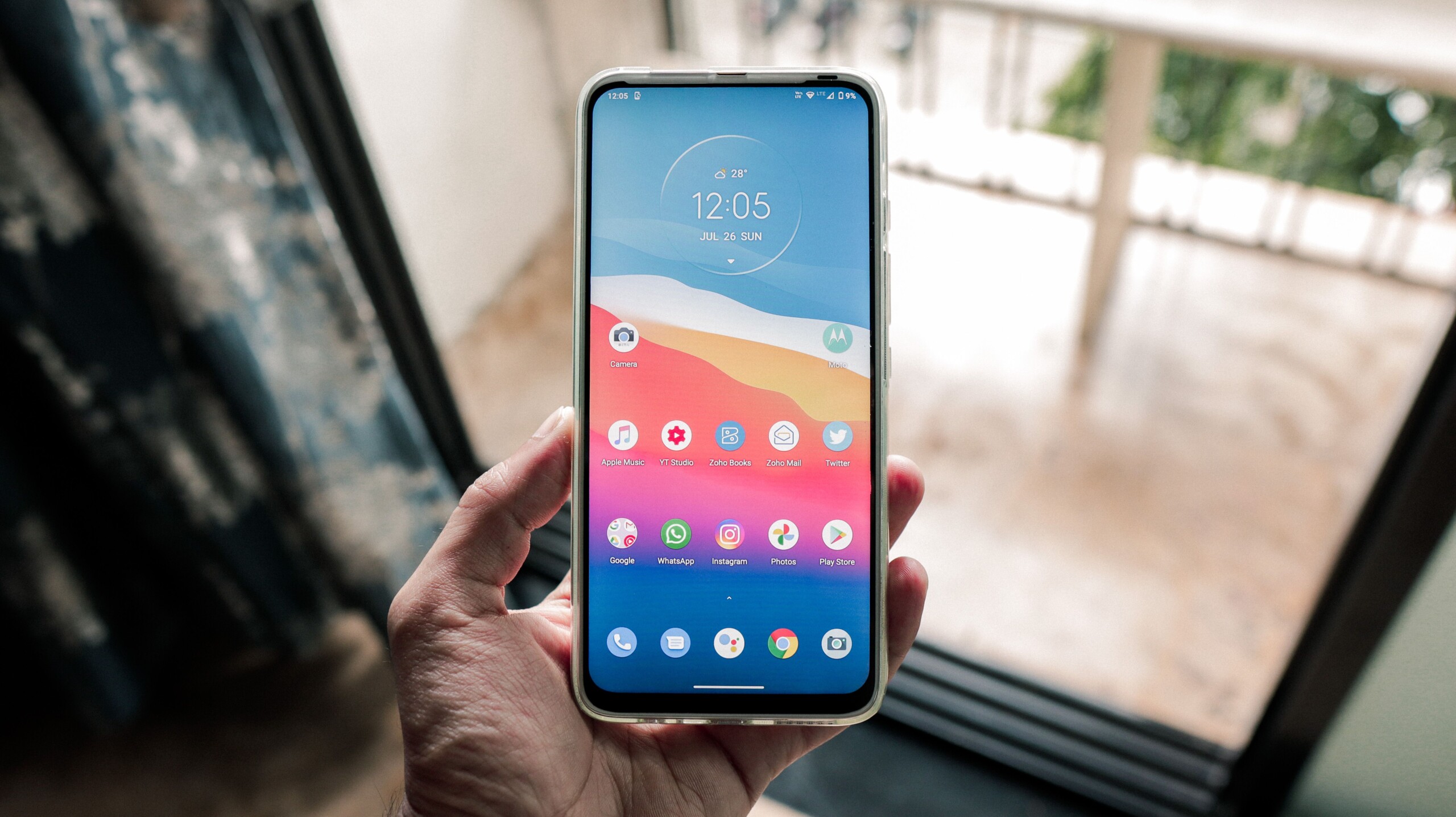
With the new phones launching every month and some being so homogeneous in terms of specifications while some being ocean apart from the new wave, it is quite pronounced to get lost amongst the school of smartphones. But, non- prophetically, it is quite laid out. For Rs. 20,000, you can get a piece that you are exactly looking for. As said before, only thing you should resolve is the purpose of your purchase. Are you getting a phone for gaming? Or for media consumption? Or is it generic? Nevertheless, your primary focus should be on a worthy chipset descending with the good cameras, display and battery. If your prime concern is gaming, you should choose a phone with good processor, refresh rate and battery. If you consume media too much, you should go for an Amoled display and battery. If it is photography, then a good camera setup, and so on. However, all features should be in check with each other at the end. For this price, one would grab a phone that seldom domesticates all the specs into the bargain.
Best Phones Under Rs. 20,000
1. Realme 7 Pro
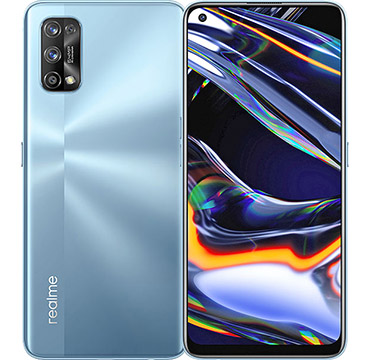
With the breakneck battle to reign the chart-topping market segment, smartphones have been playing a safe-game. The specifications that company render upon each upgrade is very tiny over their predecessor; there is barely a substantial increment to excite you for an upgrade. However, with Realme 7 Pro this time, the bishop has been played. We see quite a change to awe after. The specification is a mix-up of everything one desires.
It features a top-notch Snapdragon 720G processor which would be enough to meet your performance benchmark for a mid-range phone. Realme 7 Pro arrays the ever-seen quad-camera setup featuring Primary 64MP Sony IMX 682 sensor and a secondary 8MP ultra-wide camera. Not to mention the tusks- the 2MP depth and macro sensors. Apart from cameras, the drift is the FHD+ Amoled Screen we see in Realme 7 Pro. Unlike the conventional “higher refresh rate” LCD panel, Realme has opted out for Amoled Display, which in my opinion is a dank move. Shifting off to other features, they are equally impressive. We get a – first of a kind – 65W SuperDart Charger with Realme 7 Pro which will juice the 4,500 mAh battery in just 34 minutes. Similarly, it flaunts an in-display fingerprint sensor and stereo-speaker setup as well, which is a bargain in itself.
Realme has tried to set forth a new competition in the midrange segment this time. It would be really fascinating to see how other rivals with react upon this.
Realme 7 Pro Specifications:
| Dimensions: (160.9W x 74.3H x 8.7D) mm; 182gm |
| Build: Plastic (Polycarbonate) Back + Plastic Middle Frame |
| Display: 6.4 inches, Full HD+ Super Amoled; 1080 x 2400 resolution |
| Refresh Rate: 60Hz |
| Processor: Qualcomm Snapdragon 720G |
| Memory: 6GB RAM + 128GB ROM |
| Rear Camera: 64MP (primary) + 8MP (ultrawide) + 2MP (macro) + 2MP (depth) |
| Front Camera: 32 MP |
| OS: Realme UI on Android 10 |
| Battery: 4500 mAh; 65W SuperDart charging, 100% in 34mins |
| Features: Fingerprint (in-display, optical), USB Type-C, headphone jack, dual sim, accelerometer, proximity, compass |
| Price: Rs. 19,999 |
Watch: Realme 7 Pro Camera Review: Impressive AF!
2. Poco X3

The sister brand of parent Xiaomi, Poco, incepted the whole “Flagship Killer” mania. However, it has fallen prey of its own shadow; the shadow of Poco F1. Poco has struggled quite a bit to proffer the same flagship-killer specifications that they trialed with Poco F1. However, as all things may be, the company brought some good phones that has rightfully justified the toll of current market. Poco X3 is not an exception, it provides a stellar specification that goes parallel with its competitors.
Poco X3 is the first phone to debut the latest Snapdragon 732G chipset based on 8nm technology. This phone is rather inclined towards performance-heavy users. It embraces a 120Hz IPS LCD panel with FHD+ resolution. The display now bouquets a single punch-hole which is tad bit smaller. We see a quad camera setup, now with slightly improved 13MP ultra-wide lens. Similarly, it embarks a massive 5160mAh battery coupled with 33W fast charger inside the box. Poco X3 also houses a Liquid Cooling Technology inside it to keep the phone cool and prevent thermal throttling during heavy usage scenarios. It also headlines some voguish features like stereo-speakers, Z-axis linear motor for gaming feedback, etc. which are always good to enjoy.
Poco X3 Specifications:
| Dimensions: (165.3H x 76.8W x 10.1D) mm; 225gm |
| Build: Plastic (Polycarbonate) Back + Aluminum Middle Frame |
| Display: 6.67 inches, Full HD+ IPS LCD display; 1080 x 2400 resolution |
| Refresh Rate: 120Hz |
| Processor: Qualcomm Snapdragon 732G |
| Memory: 8GB RAM + 128GB ROM |
| Rear Camera: 64MP (primary) + 13MP (ultrawide) + 2MP (macro) + 2MP (depth) |
| Front Camera: 20 MP |
| OS: MIUI 12 on Android 10 |
| Battery: 6000 mAh; 33W fast charging |
| Features: Fingerprint (side-mounted), USB Type-C, headphone jack, dual sim, accelerometer, proximity, compass, Z-axis linear motor |
| Price: Rs. 19,999 |
3. Samsung Galaxy M31s
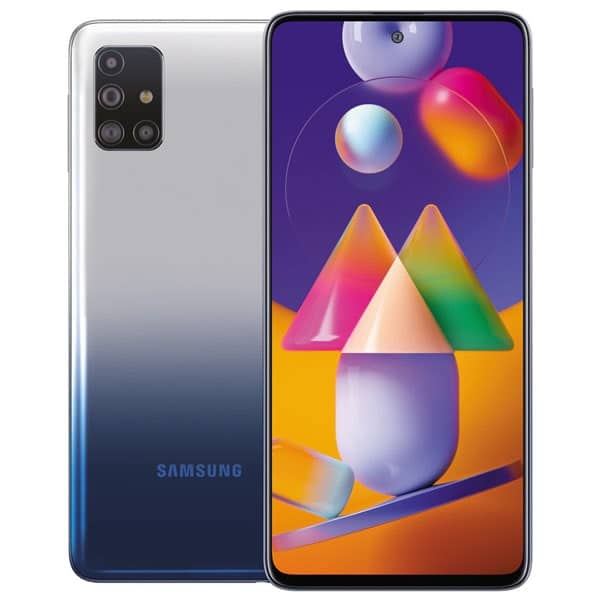
Another one to make the list is Samsung Galaxy M31s from their midrange M-lineup. Samsung has been quite regular with their midrange phones and trying good enough to prevail in the mid-tier competition. However, it is quite evident that their mere focus is not on performance side. From the series of smartphones launched, their maxim appears to be display and battery. Not trying to say their processors are outright bad, but they aren’t quite good in competition either. It is high time to upgrade their Exynos processor for midrange segment now. On the contrary, they have splendid display and good battery life; inordinate features for a media consumer.
Samsung Galaxy M31s has a colossal setup of display, battery and camera this time. Arguably, it houses the best of them in competition. It features a 6.5 inches FHD+ sAmoled Infinity-O Display housed in a plastic body. The display is crisp, sharp and produces deep, vibrant and punchy colors as you would expect. It is still clocked at regular 60Hz. Galaxy M31s also upholds a better camera arrangement; a 64MP primary shooter, a 12MP ultrawide lens, a 5MP macro sensor and another 5MP depth sensor. The image produced from Samsung phones are good to eyes; enough saturation, good dynamic range with adequate highlights and details. Samsung Galaxy M31s performs really well in good lighting conditions. Likewise, it features a humongous 6,000mAh battery with a 25W fast-charger in the box.
The only downside of Samsung Galaxy M31s is its processor. We see the same old Exynos 7 Series 9611 (10nm) processor. On a serious note, it has been like a dozen of phones with the Exynos 9611 and there is no sign of upgrade from Samsung. It performs mediocre and isn’t intended for heave gaming. Overlooking that, the phone is still a go-to from a generic point of view.
Samsung Galaxy M31s Specifications:
| Dimensions: (159H x 75W x 8.90D) mm; 191 gm |
| Build: Plastic Gradient Glass Back + Plastic Middle Frame |
| Display: 6.5 inches; FHD+ sAmoled Infinity-O Display; 1080 x 2400 resolution |
| Refresh Rate: 60Hz |
| Processor: Exynos 7 Series 9611 (10nm) |
| Memory: 6GB RAM + 128GB ROM |
| Rear Camera: 64MP (primary) + 12MP (ultrawide) + 5MP (macro) + 5MP (depth) |
| Front Camera: 32 MP |
| OS: One UI on Android 10 |
| Battery: 6000mAh; 25W fast charging |
| Features: Fingerprint (side-mounted), USB Type-C, reverse charging, headphone jack, dual sim, accelerometer, proximity, compass |
| Price: Rs. 19,499 |
4. Motorola One Fusion+

Not quite often we see a Moto phone on par with Xiaomi, Realme or Samsung devices, but this time it’s different. Motorola has made quite a resurgence into a cut-throat smartphone segment. Motorola phones have long been prevalent in smartphone traffic but are always somehow dodgy and unappealing. However, Motorola One Fusion Plus strikes its endeavors to change the common perception of it in the saturated smartphone market.
To start with, the trademark of Motorola One Fusion plus is its OS- the clean Stock Android. On the side note, let it not shade over the fact that it advances an equally impressive hardware. First, the edge-to-edge bezel-less display. Moto One Fusion Plus stocks a motorized selfie camera; thus, there is not notch or punch hole to bother your viewing experience. It shelters a 6.5inch IPS LCD “Total Vision Display”. The blueprint of the phone highly resembles of Moto G Fast parading a 4-camera setup in two different modules. It stars a 64MP primary sensor with Quad Bayer filter, meanwhile, inside a pill shaped house sits an 8MP ultra-wide lens, a 5MP macro-vision and a 2MP depth sensor. It is quite good on performance side as well since the phone is powered by Snapdragon 730 chipset. Motorola One Fusion Plus also packs a 5,000mAh battery which supplies enough horsepower to your phone to last for a day. All things considered; Moto One Fusion Plus is a good phone to tumble upon your radar that not only spouts a clean operating system but also good set of hardware.
Motorola One Fusion+ Specifications:
| Dimensions: (162.9H x 76.4W x 9.6D) mm; 210 gm |
| Build: Plastic (Polycarbonate) Back + Plastic Middle Frame |
| Display: 6.5 inches; FHD+ IPS LCD display; 1080 x 2340 resolution |
| Refresh Rate: 60Hz |
| Processor: Qualcomm Snapdragon 730G |
| Memory: 6GB RAM + 128GB ROM |
| Rear Camera: 64MP (primary) + 8MP (ultrawide) + 5MP (macro) + 2MP (depth) |
| Front Camera: 16 MP Motorized Camera |
| OS: Android 10 |
| Battery: 5000mAh; 18W fast charging |
| Features: Fingerprint (rear-mounted), USB Type-C, reverse charging, headphone jack, dual sim, accelerometer, proximity, compass |
| Price: Rs. 17,499 |
Watch: Moto One Fusion+ Full Review
5. Redmi Note 9 Pro Max/Poco X2

The last one to diversify our list is a tie between Redmi Note 9 Pro Max and Poco X2 Pro. Despite the fact that we already have a successor to Poco X2, we need to account the fact about what Poco X2 brings forward to the table. It still has a splendid assortment of features for the time being. Meanwhile, Redmi Note 9 Pro Max can not be plunged down the drain either. So, we will leave it down to your jurisdiction.
In conjunction with all other features, let us play down some basic edge of one over another. Straight forward, Redmi Note 9 Pro Max has better camera performance. Unlike Poco X2, Redmi Note 9 Pro Max calculates better details, does not have burn out highlights, handles light better and captures overall better pictures. This applies to front camera as well. On the contrary, Poco X3 exhibits a better display for it has a high refresh rate and can max out at higher brightness level. Back again, Redmi Note 9 Pro Max possesses a bigger 5,020mAh battery with 33W fast charging capacity whilst Poco X3 has a slightly inferior 4,500mAh battery. Therefore, it boils down to what you want. A phone with a better camera and battery? Or a phone with better display and a slightly better processor?
Redmi Note 9 Pro Max Specifications:
| Dimensions: (165.3H x 76.7W x 8.8D) mm; 209gm |
| Build: Glass Back + Aluminum Middle Frame |
| Display: 6.67 inches, Full HD+ IPS LCD display; 1080 x 2400 resolution |
| Refresh Rate: 60Hz |
| Processor: Qualcomm Snapdragon 720G |
| Memory: 8GB RAM + 128GB ROM |
| Rear Camera: 64MP (primary) + 8MP (ultrawide) + 5MP (macro) + 2MP (depth) |
| Front Camera: 32 MP |
| OS: MIUI 12 on Android 10 |
| Battery: 5020mAh; 33W fast charging |
| Features: Fingerprint (side-mounted), USB Type-C, headphone jack, dual sim, accelerometer, proximity, compass, Z-axis linear motor |
| Price: Rs. 18,499 |
Poco X2 Specifications:

| Dimensions: (165.3H x 76.6W x 8.8D) mm; 208gm |
| Build: Glass Back + Aluminum Middle Frame |
| Display: 6.67 inches, Full HD+ IPS LCD display; 1080 x 2400 resolution |
| Refresh Rate: 120Hz |
| Processor: Qualcomm Snapdragon 730G |
| Memory: 6GB RAM + 128GB ROM |
| Rear Camera: 64MP (primary) + 8MP (ultrawide) + 2MP (macro) + 2MP (depth) |
| Front Camera: 20 + 2MP |
| OS: MIUI 12 on Android 10 |
| Battery: 4500mAh; 27W fast charging |
| Features: Fingerprint (side-mounted), USB Type-C, headphone jack, dual sim, accelerometer, proximity, compass, Z-axis linear motor |
| Price: Rs. 18,499 |
Watch: POCO X2 + GOOGLE CAMERA = MAGIC!!
Smartphones Slightly Expensive
| Redmi k20 (6GB + 128GB) | Rs. 21,000 |
| Redmi k20 Pro (6GB + 128GB) | Rs. 22,999 |
| Samsung Galaxy A51 (6GB + 128GB) | Rs. 22,999 |
| Samsung Galaxy M51 (6GB + 128GB) | Rs. 24,999 |
Summary
| s/n | Smartphones | Price | Buy Here |
| 1 | Realme 7 Pro | Rs. 19,999 | Buy Now |
| 2 | Poco X3 | Rs. 19,999 | Buy Now |
| 3 | Samsung Galaxy M31s | Rs. 19,499 | Buy Now |
| 4 | Motorola One Fusion+ | Rs. 17,499 | Buy Now |
| 5 | Redmi Note 9 Pro Max | Rs. 19,119 | Buy Now |
| 6 | Poco X2 | Rs. 18,499 | Buy Now |
The list will be updated frequently. Stay connected with us.
Tech enthusiast and a movie fanatic.


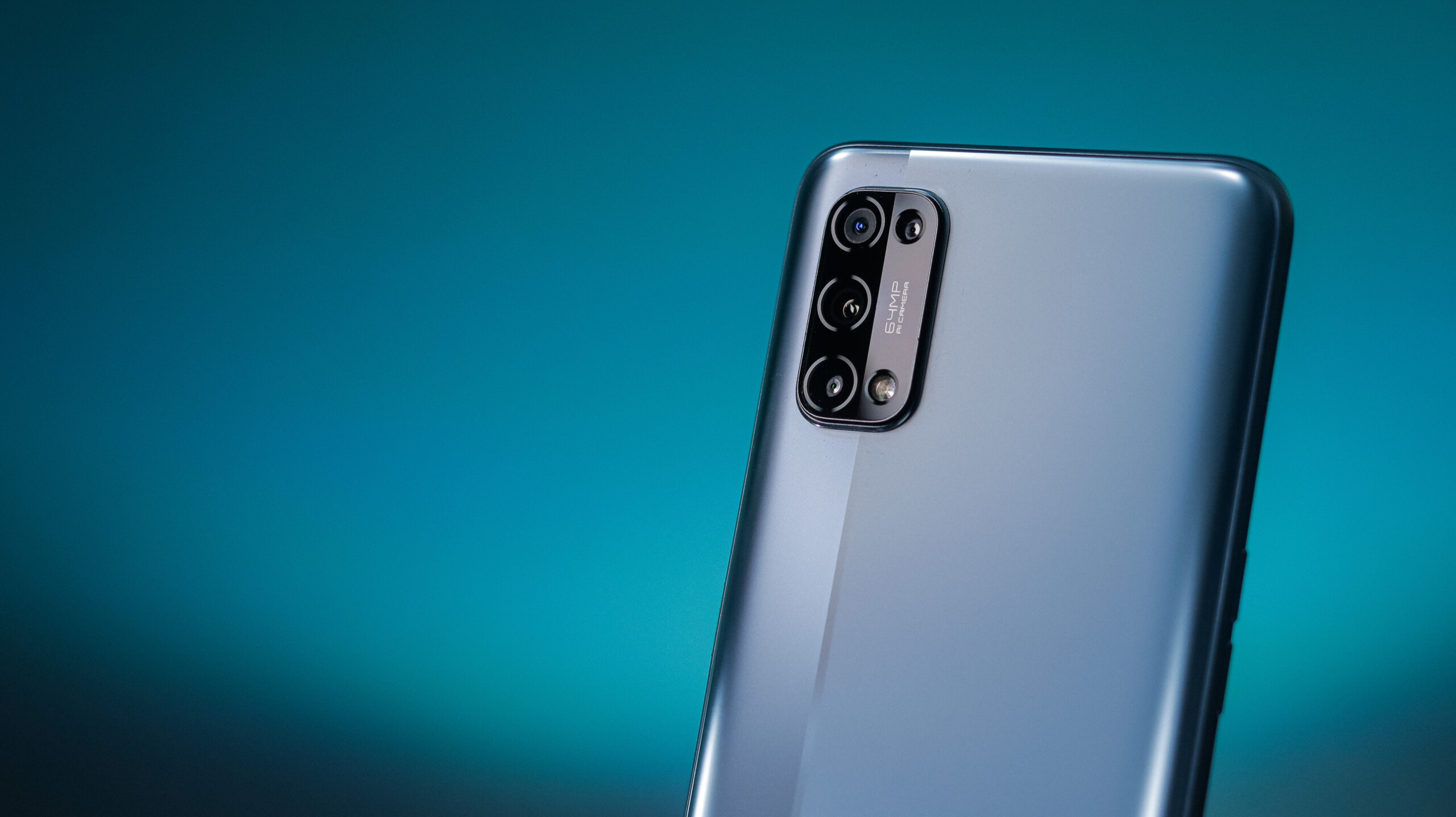





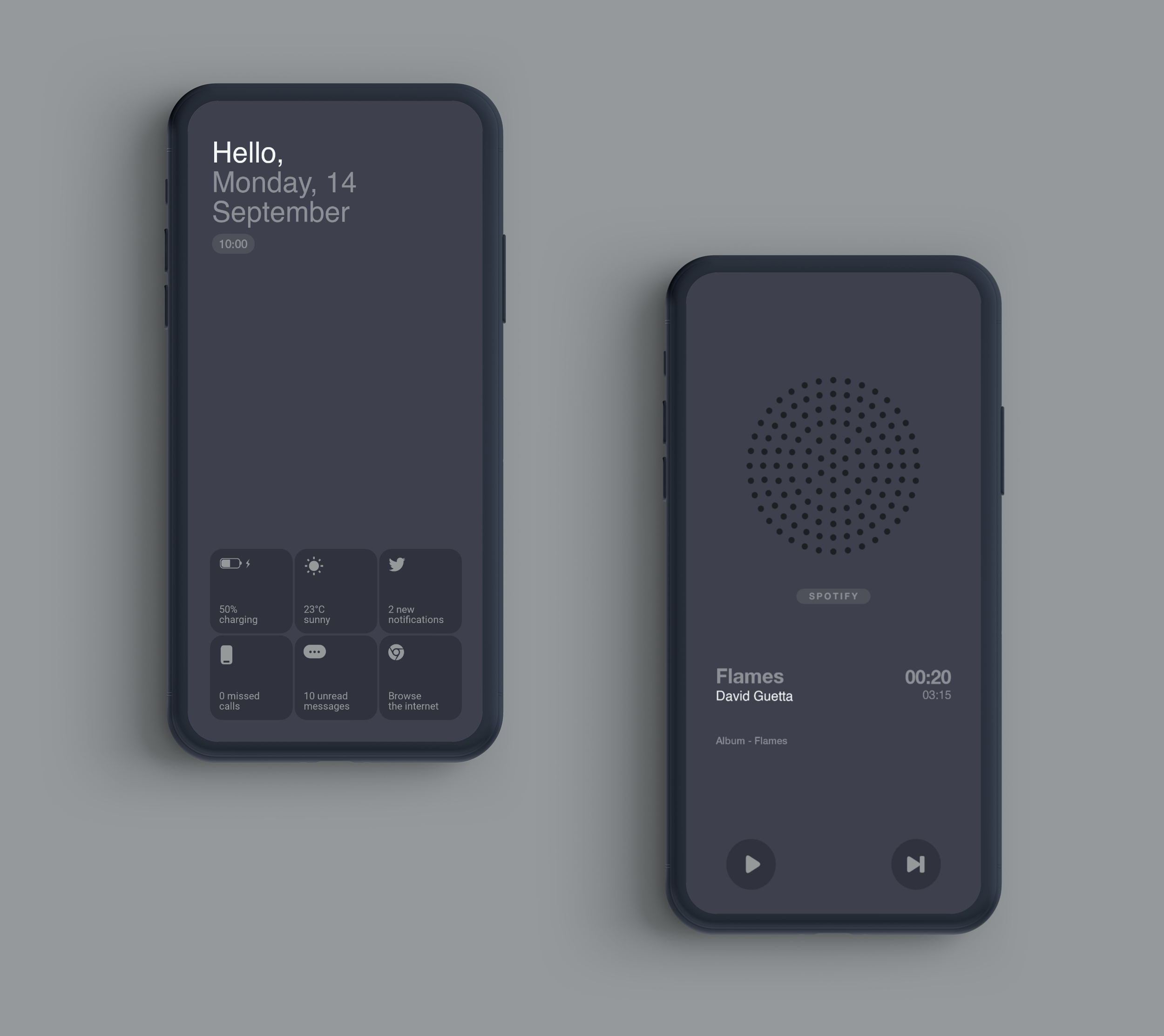
4 Replies to Top 5 Phones Under Rs. 20,000 in India [September, 2020]
How To Remove Bloatware From Any Xiaomi Devices (Without Root): Easiest Way!
Fantastic Windows 10 Icons And How To Install Them
The Minimalist Setup for Android Devices
11 Best Magisk Modules You Need to Try
Realme Watch 2 Launched: A Worthy Upgrade?
iQoo 7 Launched: Price, Specifications & Launch Date in India
Mi 11 Ultra: Into The Reckoning !!!
Surface Laptop Go Launched in India: The Most Affordable Surface!